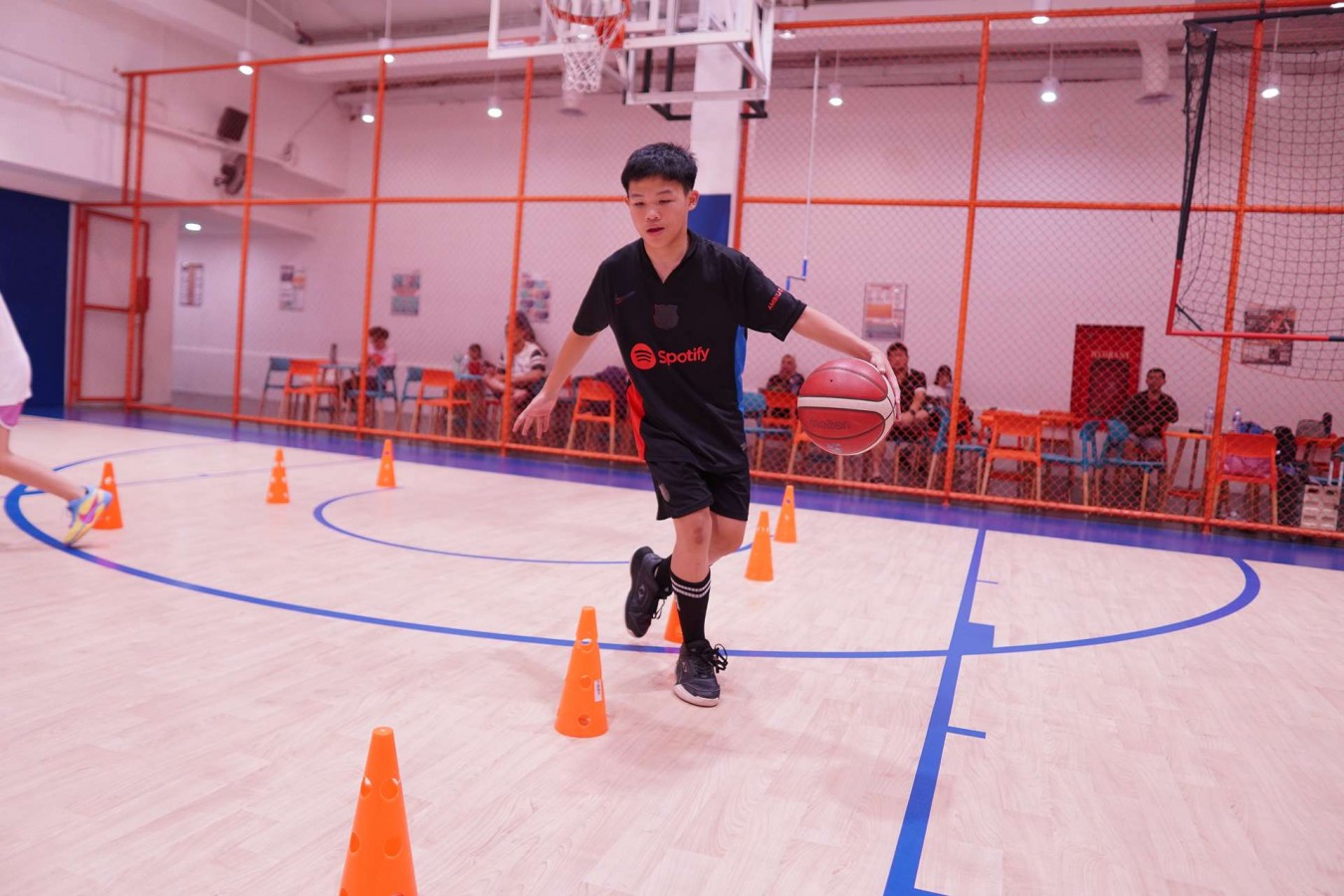Traveling Dance Skill: Movement Across the Space in Contemporary Dance

In contemporary dance, traveling dance skill refers to movement across space, moving your center of gravity from one point to another. These movements allow dancers to explore dynamic pathways, connect choreography, and express spatial intentions.
Whether walking, sliding, crawling, or leaping, traveling is a key skill that shapes the flow and emotional impact of a dance piece. We’ll tell you different types used in contemporary dance, outlines how to develop traveling in choreographed sequences, and shares practical tips. Let’s check it out!
What Is Traveling in Contemporary Dance?
Traveling or locomotor movement is any action that shifts the body's weight and position through space, in contrast to axial movements done in place like bends and stretches.
Contemporary dance techniques include walking, running, rolling, crawling, sliding, skipping, leaping, and embellished combinations to move from one area to another (as opposed to staying on the spot).
These movements are not just functional, but they actually carry intention, shape, and dynamics that contribute to the piece’s narrative and visual design.
Different Types of Traveling for Contemporary Dancers
Traveling movements can vary in speed, direction, and level, allowing dancers to explore different dynamics and spatial patterns.
From low floorwork to expansive jumps, each type of traveling helps bring choreography to life and supports the emotional tone of the performance. Here are several traveling forms you should aware of:
- Walks, marches, slides, runs
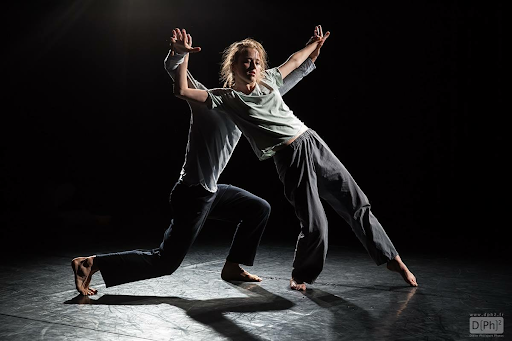
Basic but versatile ways to traverse space. Depending on quality and intention, even walking can be expressive.
- Gallops, skips, triplets, grapevines
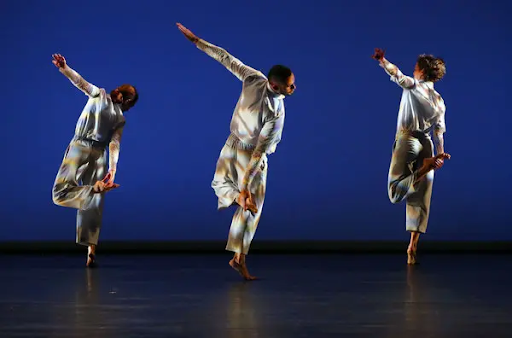
Rhythmic combinations that vary the texture and energy of travel.
- Rolls and crawls
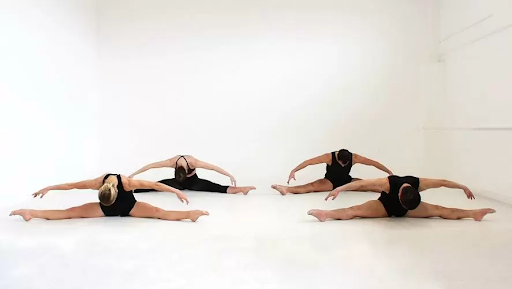
Use the floor as a partner, ideal for floorwork transitions and exploring grounded movement paths.
- Leaps and jumps (overcurves)
.png)
Traveling through high-level pathways, reaching and landing beyond ground contact.
- Undercurve movement
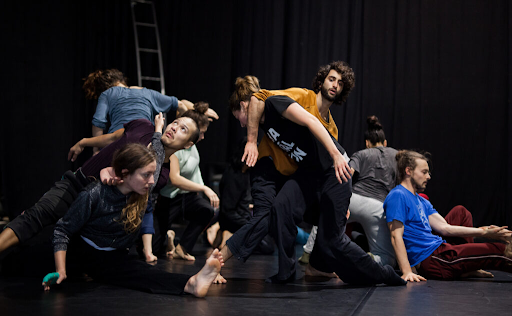
Low-to-high arcing pathways where weight sinks then rises in a fluid U-shape.
- Overcurve movement
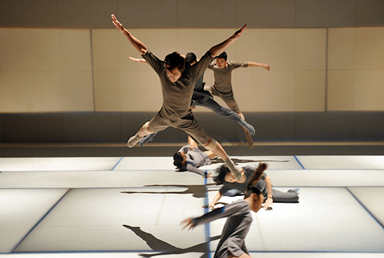
High-to-low arcs, such as launching into a leap then returning down in an inverted U trajectory.
Developing Traveling in Your Sequence
Developing traveling in your sequence allows your movement to flow naturally across the space and adds dynamic variety to your choreography.
By combining different types of locomotion with clear direction and intention, you can create more engaging and expressive dance phrases. Here’s the further guide:
1. Start Simple, Then Build Up
Begin with basic locomotor movements like walking, skipping, or sliding before moving on to more challenging combinations such as grapevines or triplets.
These simple steps help dancers feel comfortable moving in different directions and at different speeds. Once there’s good control, you can add undercurves and overcurves to explore level changes and create smooth, flowing pathways across the floor.
2. Design Movement Pathways
Think about floor patterns, straight lines, spirals, zigzags, circles and map your traveling movements to these shapes to enhance spatial design and audience engagement.
Play with your personal space (kinesphere) versus the general space around you, and vary your reach—near, mid, or far—to create contrast and structure in your choreography.
3. Integrate Transitions
Traveling often needs smooth transitions in and out of floorwork, pivoting, or stationary shapes.
Practice moving seamlessly between traveling movements, floorwork, pivots, or still shapes so the whole sequence feels fluid. For example, try linking a slide–rise–crawl or a leap–roll–walk. Smooth transitions help keep the energy flowing and make your choreography feel complete.
4. Match Energies and Levels
Use different movement qualities to bring variety and texture to your traveling steps. Think of Laban’s qualities: fluid or percussive, direct or indirect, strong or light.
Also experiment with levels. You can try to move close to the floor with grounded crawls, glide through the middle level with slides, or soar high with leaps. Mixing energy types and levels adds depth and keeps your choreography visually exciting.
Tips on How to Travel in Contemporary Dance
To improve your traveling in contemporary dance, here are several tips you can pay attention to:
- Practice rolling, sliding, or crawling to develop a natural sense of moving through space.
- Mentally and physically trace the route you plan to take before moving to keep your travel intentional.
- Let momentum guide your transitions. Try to lean into gravity during undercurves and spring upward during overcurves for fluid, energy-efficient movement.
- Keep your center stable to shift weight effectively and maintain balance, especially when changing levels.
- For turning steps like chassés or piqués, focus your gaze on a fixed point to maintain orientation.
- Be mindful of the performance space and other dancers, adjusting your travel path as needed.
- Change speed, force, and movement quality to expand your range and adaptability.
- Use video recordings or peer feedback to assess your execution and sharpen spatial clarity.
Have You Learned This Technique?
Traveling is a fundamental skill in contemporary dance that allows dancers to move through space with purpose, energy, and emotion. By understanding traveling dance skills, dancers can enhance their technique and bring greater clarity and impact to their performance.
At Rockstar Academy’s Sport & Performing Arts Academy, students have the opportunity to dive deep into contemporary dance technique with expert coaches who guide them through proper technique, including how to travel confidently across the space.
More than just a contemporary dance class, Rockstar Academy offers a full learning experience that combines technical growth with artistic expression. Each year, Rockstar also hosts several contemporary dance events and competitions like CSTD Contemporary Dance Testing, Ballet & Contemporary Dance Recital, RockOlympics and Elite Championships.
These give students the chance to showcase their progress, build confidence, and experience the thrill of performing in a professional setting. The competitions are not just about winning, it's about encouraging creativity, celebrating hard work, and fostering a love for dance.
Whether you’re a beginner or looking to refine your skills, you’re welcome to try a free trial class and experience the Rockstar difference. With academies spread across the Jabodetabek area, you won’t have to worry about this opportunity!
FAQ
What’s the difference between locomotor and non‑locomotor movements?
Locomotor movements travel through space, whereas non‑locomotor movements are performed in place.
Why are undercurves and overcurves important?
These curved spatial pathways create fluid, expressive traveling across levels. Undercurves use low-to-high arcs; overcurves use high-to-low arcs—both adding dynamic shape and continuity in movement phrases.
How can I improve smooth transitions in traveling sequences?
Practice linking movements seamlessly. You can use momentum from one step to enter the next, maintain alignment and core engagement, and rehearse phrase sections slowly before increasing speed.
Is traveling only about footwork?
Not at all. Traveling integrates the whole body—core, arms, spine, and head all contribute to direction, quality, level change, and expressive presence.

